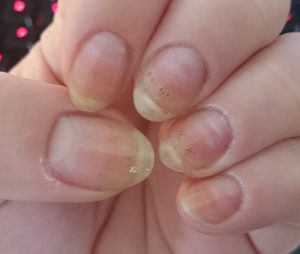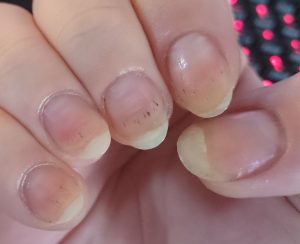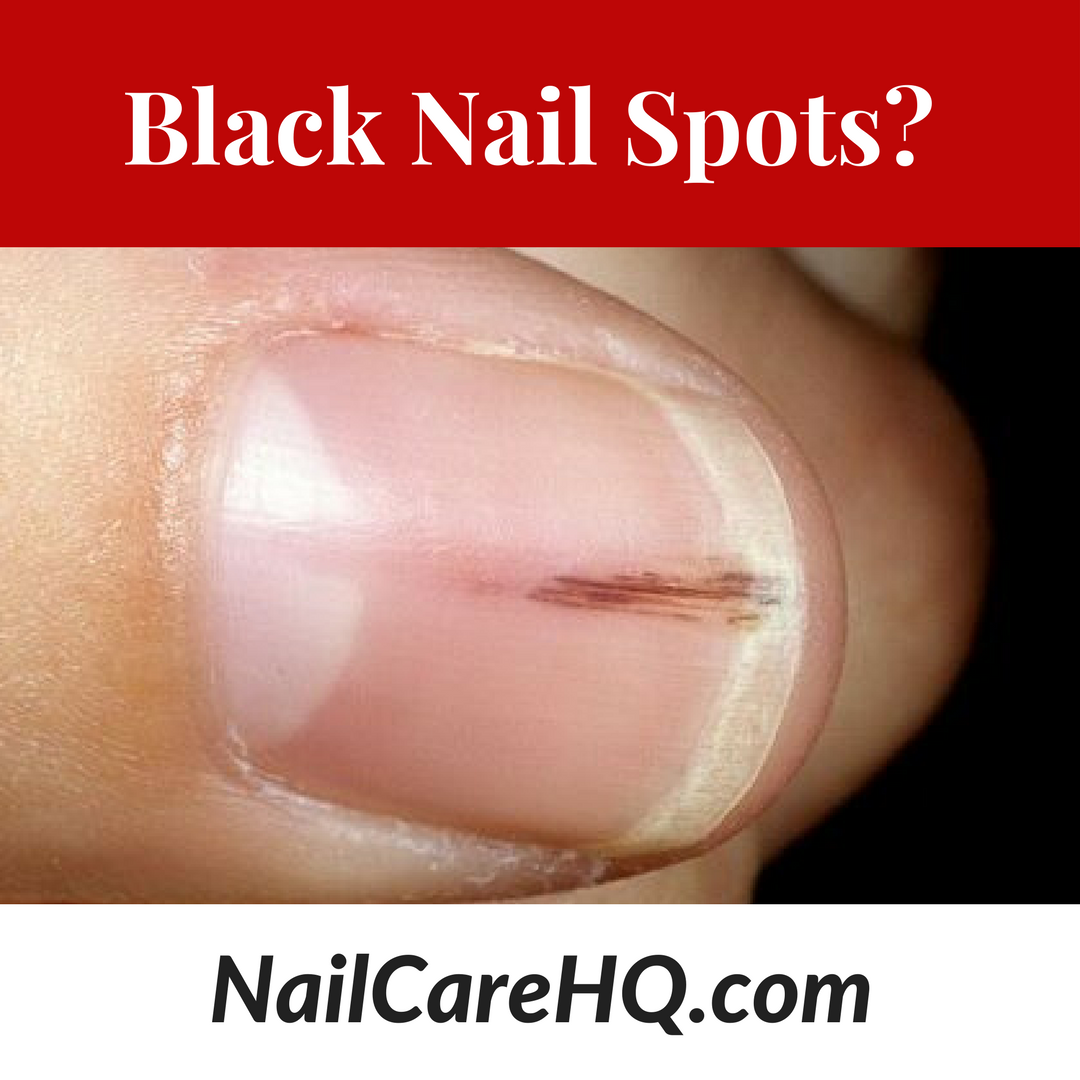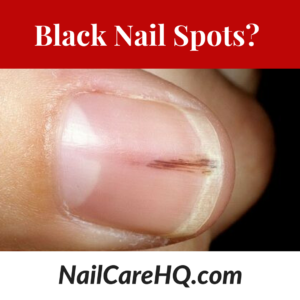Black Spots In Nails
Have you ever had black spots or streaks show up in your nails? If so, it was probably hard to not freak out.
In this article you’ll learn:
- What are the black spots?
- What causes them?
- Are they reversible?
- Are you going to die? (Just kidding. You’ll be fine.)
ASK ANA: Black Spots In Nails
Hi, Ana! So you’ve talked about white spots on nails. What about black spots that look like “specks”? I’ve got them on a lot of my nails, and I have no idea what caused them. Thank you! ~Jenny
ANSWER
This is such a great question Jenny! I sent your photos off to my mentor, Doug Schoon, author of Nail Structure and Product Chemistry, just to make sure that my answer was correct.
It looks like splinter hemorrhages. They’re pretty common and are usually caused by abuse to the nail. They are caused by blood leaking from the capillaries of the nail bed. In the salon, they are often caused by over-filing and improper product removal. ~Doug Schoon
Let’s Look Closer
When damage occurs in the pink nail bed, a small amount of blood can ooze out.
Since the blood is trapped under the nail plate, a small red spot can form.
Eventually tiny clots form when the bleeding stops.
The iron in our blood causes the red or brown color.
Since the nail plate grows out in linear grooves—think ridges—the blood clot can take on a straight shape, looking like a wooden splinter is under your nail.
Like Doug said above, these are often caused by some sort of hard impact or other damage to the nail bed.
In the overwhelming majority of cases, splinter hemorrhages are not due to any serious underlying systemic disorder or any skin disorder of the nail unit. Therefore in most situations, as the nail grows out, since the splinter hemorrhage is deposited on the under surface of the nail plate, it will grow out with the nail and the nail bed over a period of time and consequently disappear completely. This usually happens in a period of a few months. ~Richard K. Scher, M.D.
Reader Beware
Since I’m not a doctor, I usually don’t like to present medical issues that could be causing problems in the nail plate in my articles.
There are too many articles online that try to scare the stuff out of you. These articles are a hypochondriacs playground. Most of the time, they are completely false.
It’s NOT a good idea to try and self diagnose based on a fake internet article that provides false information.
Their only focus is to load their web pages with keyword-rich articles that Google’s algorithms like to show in search results. The website’s sole objective is to sell advertising or a bogus product on their site.
If a website has the keywords in the url address, please don’t waste your time clicking or reading. For example; when searching for “nail fungus,” one of the results Google delivers is www.nailfungusreport.org. Don’t bother reading pages like these.
I have found WebMD.com and MayoClinic.com to be reputable sources. Surprisingly, so is NailsMag.com. They are the premier magazine for nail professionals. They have many articles that provide additional information which nail professionals don’t usually learn in school. Doug Schoon also contributes to Nails Magazine.
Psoriasis Of The Nail Plate
In my research, I did find one interesting consideration if these hemorrhages tend to be on several nails, rather than just one.
Most of us are familiar with eczema and psoriasis of the skin, but psoriasis of the nail plate can cause similar symptoms.
In this condition, there is a thinning of the upper layer of the nail bed (epidermis) and therefore the small blood vessels are not as deep down within the tissue of the nail bed, so splinter hemorrhages are easier to develop. Therefore they occur frequently in patients who have nail psoriasis. ~Richard K. Scher, M.D.
Can I Fix It?
As you’ve probably gathered by now, there is no cure to make them go away.
As I mention in my White Spots In Nails article, these things just need to grow out.
In Conclusion
The fingernail plate takes about 4-6 months to completely replace itself.
Just watch the hemorrhage as the nail grows out. If it seems like it keeps getting wider, longer, or creeping back toward the cuticle line, then it’s time to visit your dermatologist.
Fortunately, nail plate issues tend to develop slowly so you have time when your doctor can’t see you for three weeks.
You’re going to be ok.

